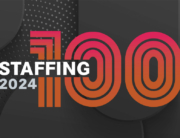At first glance, the relationship between staffing firms and job boards appears unlikely, as both compete in the same space to fill the same needs. But job board providers, job board aggregators and professional networking websites are now top recruiting tools for staffing firms. They have formed an unlikely friendship, after years of battling the same frontier.
Today, the function of job boards and social media sites is changing rapidly. No longer just websites with long lists of open positions, they increasingly function more as technology and solutions partners to staffing firms.
“We don’t think about ourselves as a ‘job board,’” explains Matt Mund, who oversees product management and marketing at Monster. “We think about our core business of traditional sourcing products and how we innovate on top of that to expand our business beyond into the next generation of ways to connect jobs and people, whether it’s on desktop, mobile or social.”
In a Staffing Industry Analysts survey of staffing firms, 33% ranked job boards as the temporary worker recruiting tactic with the highest bang-to-buck return on spend/effort. And 25% reported jobs boards yielded the highest bang-tobuck for direct-hire recruiting tactics, surpassed only by LinkedIn, which led the survey with 32%. Firms primarily serving the industrial/logistics and healthcare sectors, however, did cite job boards as the direct-hire recruiting tactic with the highest return on spend.
The picture is different among contingent buyers, though, who gave job boards a net promoter score of -33%, the lowest net promoter score of the four categories asked about in a separate survey by SIA. The low score largely refl ected the very negative opinions of procurement executives, who as a group gave job boards a -56% score, while buyers in HR and management/operations combined to give job boards a -3% score. In comparison, The NPS was 18% for managed services providers, 3% for vendor management systems and -19% for staffing suppliers.
However, among job seekers, the most-recognizable companies were Monster, Indeed, LinkedIn, Careerbuilder and Dice. Candidates surveyed in a Staffing Industry Analysts report mentioned they do use these companies’ websites to find work. The report also found healthcare workers’ use of job boards and social media sites to look for jobs was notably low.
Technology on the forefront
Monster hopes to further develop its partnership with staffing firms as it builds its technology footprint and shifts its strategy beyond the job board format, Mund says.
The firm last year purchased San Francisco-based TalentBin Inc., a social profile talent search engine, and Bostonbased Gozaik LLC, which develops social jobs aggregation and distribution technology. And in February, the company launched Social Job Ads, its next-generation social recruitment advertising solution on Twitter. The product enables potential employers to find and engage candidates across Twitter, regardless of whom those individuals follow, and automatically distributes selected jobs to targeted candidates. It is available commercially to its US customer base.
“Staffing firms have been always on the forefront of new technology adoption,” Mund says. “They teach us a lot about how we should innovate just by virtue of some of the internal technology that they create or the challenges that they put forward to us. Definitely they are pushing the overall industry, including us.”
Simply Hired, a job board aggregator, executes more than 1 billion searches annually and counts more than 30 million unique visitors a month. Senior VP of Sales Bob Taylor says staffing firms benefit from working with an aggregator such as Simply Hired because they offer a pay-for-performance model that provides improved return on investment. The size and the breadth of an aggregator’s audience also lends itself well to staffing firms.
“Their product is really the people that we are providing to them,” Taylor says. “It needs to be very quick. It needs to be cost effective.”
The Candidate Experience
Eric Gilpin, president of CareerBuilder’s staffing and recruiting group, also says the timing is right for innovation in the industry and notices staffing firms using job boards to increase communications and improve interactions with candidates.
“There’s just been a lot more investment in the candidate experience, candidate process, candidate searching, candidate match in the past few years than we’ve seen in a very long time,” he says.
As qualified candidates become more difficult to find, redeployment is fast becoming the greatest challenge facing the staffing industry, Gilpin says, citing a recent CareerBuilder survey that found staffing firms are not contacting their contingent workers before their assignment ends 38% of the time. Chicago-based CareerBuilder is investing in technologies — applicant tracking systems, CRMS, talent engagement communities — that help automate the redeployment of temporary workers. Currently, about 400 staffing firms utilize its Talent Network product.
“Staffing firms have just a huge margin opportunity just to increase redeployment,” Gilpin says. “They might not be at the same customer, but they would still be working for my staffing firm.”
Staffing firms would also be well-served to focus on providing their contingent workers with a positive experience, especially as online review sites such as Yelp and Glassdoor rise in popularity, he says.
“Creating a good candidate experience and treating people well, especially the ones you put on assignment, can only do good things for you because they will go online and write good thing about you,” Gilpin says. “When you do the opposite, guess what? They still get online and talk about you.”
Mining Candidate Profiles
Professional networking sites such as LinkedIn provide staffing firms with job listings and recruiting technologies. LinkedIn, which currently boasts more than 3 million jobs and 350 million members, is used by more than 30,000 companies worldwide to recruit, Senior Manager Joseph Roualdes notes.
“I think what has changed a lot about recruiting is the amount of information that recruiters have at their fingertips,” Roualdes says.
Such big data not only includes information fundamental to job criteria — such as skills and expertise, location and education — but also information that underscores a potential candidate’s professional interests, personal connections and job interests. Member profiles can now also include presentations, videos, photos, images and blog posts.
“That’s all information the recruiter can use to better home in on who is the best person for the job and find information that they can use to reach out in a far more meaningful way,” Roualdes says.
He recommends recruiters use the available information to make personal and relevant connections with candidates, avoiding cold calls or cold in-mails. Recruiters should review the posted content and then ask a shared connection for an introduction.
“It is unbelievably important that recruiters take the time to find the people that are a great fit, dig into their professional interests, read all the content they publish, and then tailor their initial outreach and ask for a warm introduction,” Roualdes says. “It takes a little bit longer, but it’s going to highly increase the chances that they are not going to just hire somebody, but they are going to hire the right person and that person is going to be at the company longer.”
Dice President Shravan Goli also advocates taking a deeper look at potential candidates. The company’s Open Web product is a big data, social recruiting tool that aggregates millions of tech professionals’ profiles from publically available data on 130 different sites. The information not only includes skills and experience, but it also includes hobbies and passions, as well as information on what motivates them and how active they are in the technology areas of various networks.
“When we aggregate the data, we enrich the data through the résumé data, and as a result staffing companies are able to get a complete 360-degree view of the candidate,” Goli says.
Dice Holdings, the parent company of Dice.com, had more than 700 active paying Open Web customers at the end of 2014.
No Slowing Down
Desktop, mobile and social, together with media and technology, will combine to accelerate the job board/social media industry and its symbiotic relationship with the staffing industry.
“I don’t think that those are new or emerging trends,” says Monster’s Mund. “I think that those are early in their impact, and we will only see an acceleration of how they can merge together to change and evolve the way recruiters and candidates come together.”







